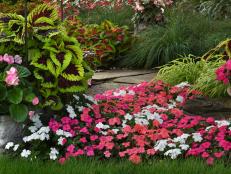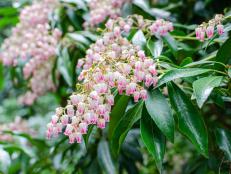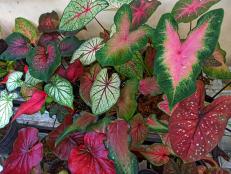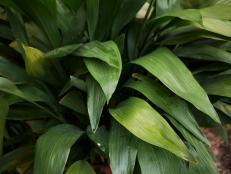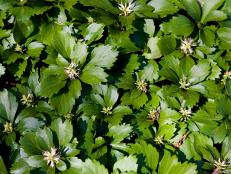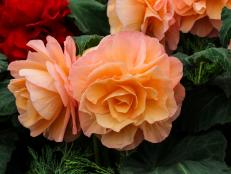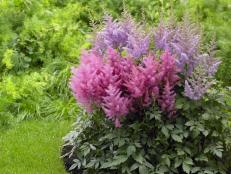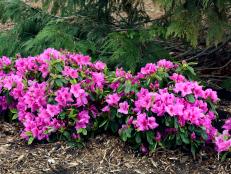All About Ajuga
Carpet a shady spot, a slope or an area where grass won't grow with this tough groundcover. Bonus: you'll get spring-to-summer blooms.


Photo by Felder Rushing
Don’t judge a plant by its size. Ajugas may be small, but these little groundcovers are durable and tough. They can help control erosion on a bank or hill, fill in a patchy lawn where grass refuses to grow, or simply add color to shady spots. They’re also great for growing underneath shrubs and trees.
Ajugas are especially nice because they hold their leaf color and stay attractive almost all year-round, and they bear blue, purple or white flowers from spring into summer. Also known as carpetweed or bugleweed, Ajuga reptans is a perennial that is typically hardy in zones 3 to 9.
These evergreen plants form dense mats of glossy leaves. They can take sun to partial shade, although the foliage develops its best color in full sun. Easy to grow in almost any kind of soil, ajugas like a moist location that drains easily, but they can withstand short periods of drought.
Because ajuga naturalizes easily, spreading by stolons, or horizontal stems that creep along the ground, you'll want to think about where you plant it. This member of the mint family spreads fast and can become invasive. Avoid planting too close to flower beds, lawns, or other areas where you'd have to keep removing it. If you're concerned that ajuga is considered an invasive in your region, visit the Invasive Plant Atlas.
Wait until all chance of frost has passed to plant ajugas. Then dig holes just deep enough for the root balls, spacing the holes 8 to 15 inches apart. Gently loosen the plants’ roots, place them in the ground, and firm the soil around them. Water thoroughly to settle them in and eliminate air pockets. Ajugas seldom need fertilizing.
You’ll probably want to thin your ajugas every three years or so, to prevent them from becoming overcrowded. Divide the established clumps in fall or early spring and replant them, if desired.
Crown rot can be a problem, especially in hot, humid areas or in heavy soils. You’ll recognize it by signs of rot on the lower leaves and spots on the crowns of the plants. To prevent this disease, give your plants good air circulation and avoid overfertilizing. There’s no treatment for crown rot, so if it shows up, you’ll need to remove and destroy the affected plants. When you’re ready to replant, try a different kind of groundcover, to decrease the chance that the problem will return.
Occasionally patches of ajuga will die. If this happens, remove the dead foliage, but let the roots stay in the ground. The plants will often come back in the following year.
Ajugas are low-maintenance plants that have good resistance to rabbits and deer. They don’t require pruning, but if you want to make them look a bit neater after the blooms are finished, mow over them with your mower on a high setting.
If your ajugas are planted in shade, try companion plants like coral bells, hostas, ferns, daffodils, astilbe, forget-me-not, violas, hardy geraniums and other woodland plants.
Great Ajugas to Grow:
‘Catlin’s Giant’ – Eight to 10-inch spikes of deep blue flowers are held atop bronze-blue foliage. The plants grow 3 to 6 inches tall and spread one to two feet across.
‘Blueberry Muffin’ – Vigorous and fast-spreading, ‘Blueberry Muffin’ has deep blue flowers and thick leaves that hold up well even in harsh weather. Hardy in zones 5 to 9, it needs regular watering, especially when the temperatures soar. The plants grow to 6 inches high and spread up to 28 inches.
‘Black Scallop’ – Add near-black to your yard or garden with this very dark ajuga, which has blue flowers and purple-black leaves with scalloped edges.
‘Toffee Chip’ – This variety, which is hardy in zones 3 to 10, has new leaves that start out light brown. As they grow, they turn grayish-green with creamy gold margins.
‘Chocolate Chip’ – Sometimes sold as 'Valfredda', this dwarf variety has chocolate-burgundy leaves and bluish-purple flowers.
‘Burgundy Glow’ – Hardy in zones 3 to 9, this popular ajuga has blue flowers and tricolored foliage in shades of pink, cream and white. The plants grow 6 to 10 inches high.
‘Purple Brocade’ – Use this ajuga, which has bluish-violet flowers and deep green leaves with purple markings, in zones 3 to 9. This variety is less aggressive than most ajugas.

.-Battle-on-the-Beach-courtesy-of-HGTV.-.jpg.rend.hgtvcom.196.196.suffix/1714761529029.jpeg)





